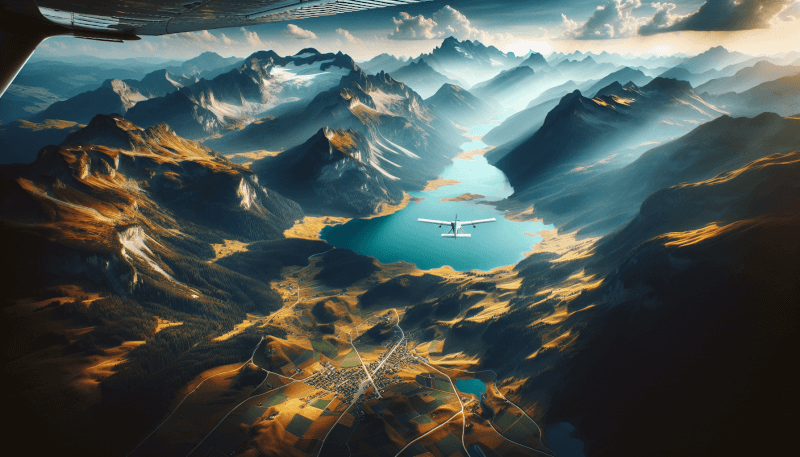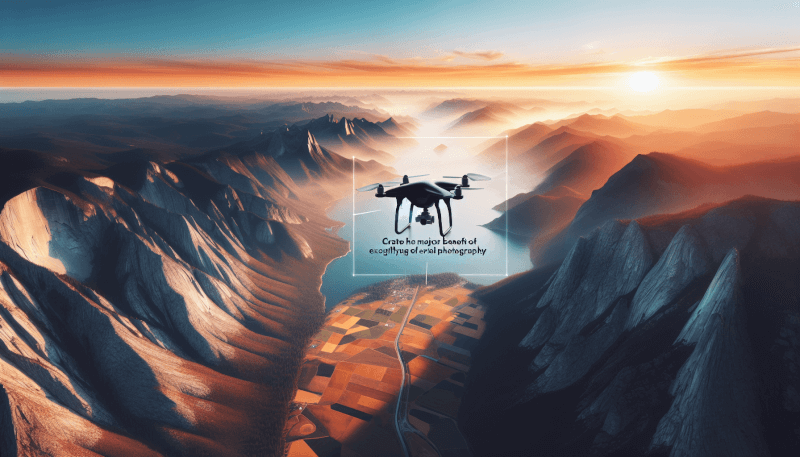You may not realize it, but aerial photography has become an integral part of our modern world, offering a unique perspective on the landscape below. In this article, we will explore three key advantages of utilizing aerial photography. From capturing stunning aerial views, to providing valuable insights for industries such as real estate and urban planning, aerial photography has quickly become a powerful tool that offers countless benefits. So, join us as we take to the skies and uncover the advantages of this captivating art form.

Advantage 1: Enhanced Perspective
Wide Coverage of Landscapes
Aerial photography allows you to capture vast and expansive landscapes that are often impossible to capture from the ground. Whether it be rolling hills, majestic mountain ranges, or sprawling cityscapes, aerial photography provides you with a unique perspective that showcases the true beauty of the land. From high above, you can capture the entirety of a landscape, giving you a sense of scope and scale that cannot be achieved through other mediums.
Bird’s-Eye View
One of the most exciting aspects of aerial photography is the bird’s-eye view it offers. With a camera in the sky, you can observe the world from a perspective similar to that of a bird in flight. This elevated viewpoint allows you to see the world in a way that you would never experience otherwise. It offers a fresh and captivating angle, providing a whole new level of visual interest to your photographs.
Better Visualization of Scale and Proportions
Aerial photography is not just about capturing stunning images; it also offers the advantage of better visualization of scale and proportions. By being above the subject, you have a clearer sense of its size and how it fits into its surroundings. This is particularly useful when photographing large structures such as buildings, bridges, or city layouts. Aerial photography allows you to capture these subjects in their entirety, highlighting their grandeur and giving viewers a true sense of their scale.
Advantage 2: Detailed and Accurate Documentation
Capturing Precise Details
Aerial photography excels in capturing precise details that may otherwise go unnoticed from the ground. From intricate architectural features to the delicate patterns of nature, aerial photography can reveal the beauty in the smallest of details. It allows you to zoom in and capture elements with remarkable clarity, providing a level of detail that is often unmatched by other forms of photography.
Creating High-Resolution Imagery
Aerial photography is known for producing high-resolution imagery, ensuring that every detail is captured with utmost clarity. The advancements in camera technology and equipment used in aerial photography have made it possible to capture images with exceptional sharpness and detail. This high-resolution imagery not only enhances the visual appeal of the photographs but also contributes to their accuracy and usefulness for various applications.
Accurate Mapping and Surveying
Aerial photography plays a vital role in accurate mapping and surveying. The detailed and precise imagery obtained from aerial photographs can be utilized for creating accurate maps, monitoring land use, and conducting surveys. It provides an accurate representation of the terrain, enabling urban planners, architects, and engineers to make informed decisions about land development, infrastructure projects, and environmental management.

Advantage 3: Versatility and Efficiency
Versatile Applications
One of the significant advantages of aerial photography is its versatility and wide range of applications. It can be utilized in various fields, including real estate, tourism, environmental monitoring, agriculture, and cinematography. In real estate, aerial photographs can showcase properties from a unique perspective, helping potential buyers visualize the property’s features and surroundings better. Similarly, tourism industries can use aerial photography to promote destinations by capturing breathtaking aerial views. The versatility of aerial photography makes it an invaluable tool across many industries.
Time and Cost Savings
Aerial photography provides significant time and cost savings compared to traditional methods. In the past, capturing aerial images required manual methods like aircraft or helicopter flyovers, which were time-consuming and expensive. However, with the advent of drones, aerial photography has become much more accessible and cost-effective. Drones equipped with high-resolution cameras can fly over desired areas quickly, capturing images and footage efficiently, eliminating the need for expensive aerial equipment or extensive on-site visits.
Improved Safety
Aerial photography offers an added advantage of improved safety for capturing images in challenging or dangerous environments. There are situations where it may not be safe or practical to have a photographer on the ground. In such cases, aerial photography allows you to capture images without putting anyone at risk. Whether it’s documenting hazardous construction sites, inaccessible landscapes, or emergency response situations, aerial photography provides a safe and effective way to obtain the required visuals.
In conclusion, aerial photography offers several distinct advantages that enhance the overall photographic experience. From the enhanced perspective and the ability to capture precise details, to the versatility and efficiency it provides, aerial photography has revolutionized the way we view and document the world around us. Whether you are a professional photographer or simply an enthusiast, embracing aerial photography opens up a whole new world of stunning visuals and limitless possibilities. So buckle up, fasten your seatbelt, and get ready to take your photography skills to new heights with the incredible art of aerial photography.


